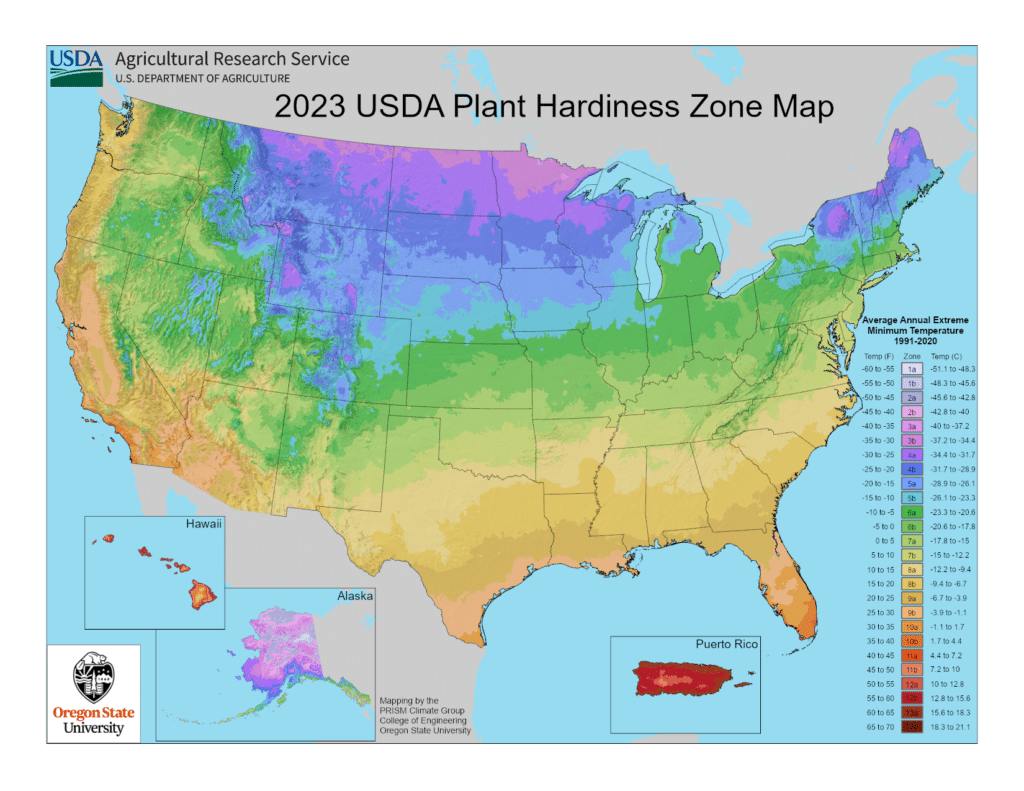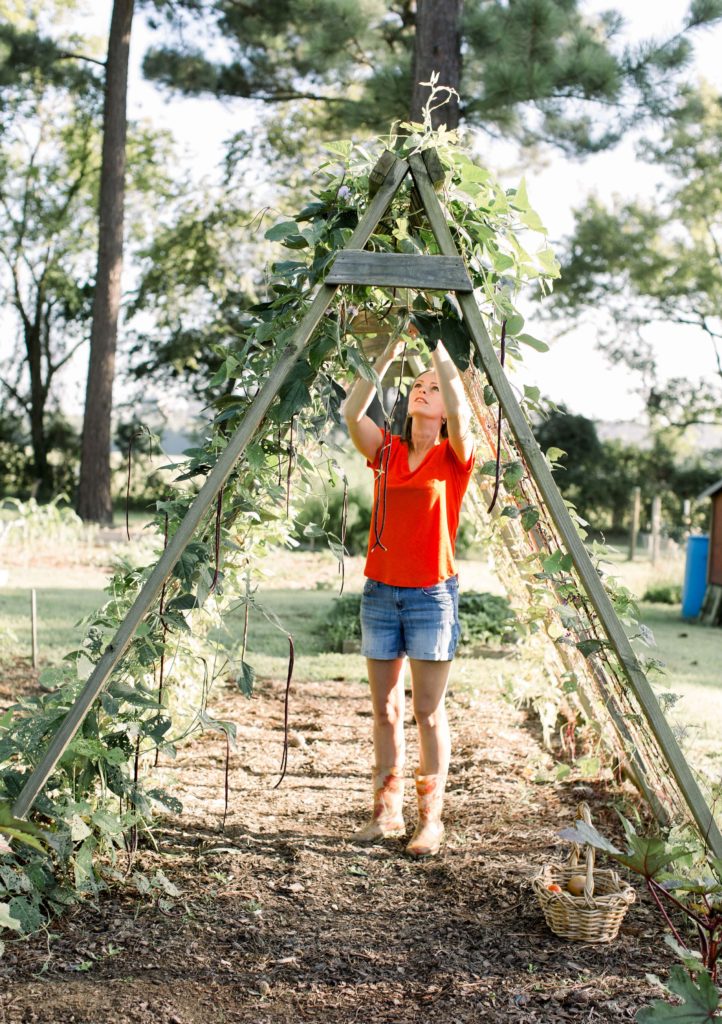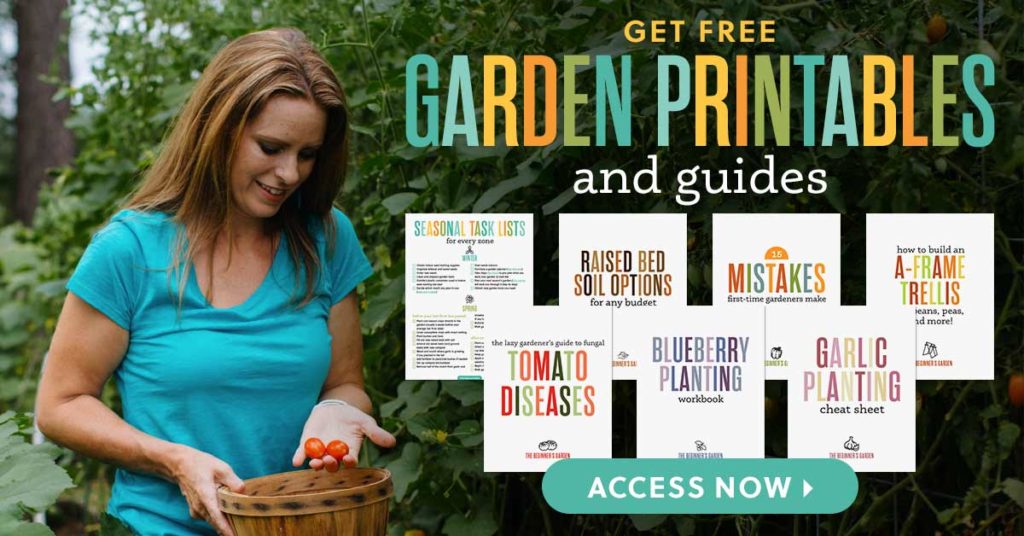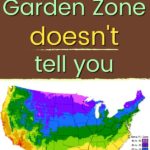Difference Between Garden Zone and Growing Season
What purpose does knowing your garden zone serve? As a beginning gardener, I was mistaken in my thinking about what a garden zone actually means.
I thought my garden zone dictated when I should plant my crops.
In Zone 7, for instance, I assumed all those in zone 7 would plant at the same time. Likewise, people living in zone 8 would plant earlier and those in zone 6 would plant later.
While this isn’t always inaccurate, I realized as I dove deeper in my garden journey, this isn’t always true, either. Garden zones were never created to tell you precisely when to plant. Instead, they serve an entirely different function. While it’s good to know your zone, it’s even more critical you know your growing season.
What is your growing season? Your “official” growing season represents the time between your average last and average first frost dates. (I say “official” because we can grow food outside of these dates, but it’s these dates that will determine when to grow what.)
What are Garden Zones?
In the United States, garden zones were developed by the United States Department of Agriculture (USDA) to help growers understand, “which plants are most likely to thrive at a location based on the average annual minimum winter temperature” from a recent 30-year period of time. Given these averages, the USDA created a map to help us understand which garden zone we live in:

Updated in 2023, this map takes into account many factors in addition to the average minimum winter temperature, such as:
- the effect cities with lots of concrete and asphalt have on temperature (they are warmer)
- elevation (higher elevations are colder than surrounding areas)
- the proximity of large bodies of unfrozen water (producing a milder winter)
The updated 2023 version of the Plant Hardiness Zone Map has taken data from almost double the amount of weather stations since the 2012 version. Roughly half of the US ended up going up a zone. In my area of Arkansas, I am now considered zone 8a, whereas before I was 7b. Read the full press release on the updated 2023 map here.
But if garden zones don’t tell you when to plant, what are they used for?
Why You Shouldn’t Use Garden Zone to Know When to Plant
As I’ll explain below, garden zones focus on your minimum low temperature. They tell you nothing about when to plant.
That’s where I think gardening “zones” — and all the information online about them — can cause confusion. I’m a big fan of Pinterest (follow me here) and I find some fantastic gardening articles on there. But the ones I usually skip over are the ones that say something like, “What to plant in August in Zone 7.” The problem is, your zone does not tell you WHEN to plant. Its primary purpose is to tell you WHAT will survive the winter.
And while those “when to plant” guidelines can serve a starting point, you need to understand that your questions of “when to plant” are best answered by something other than your gardening zone: your growing season.

The Importance of Knowing Your Growing Season
In general, most backyard gardeners will use their growing season much more in their garden planning than their garden zones. How do you find your growing season?
Your growing season is determined by knowing your last and first average frost dates.
While many plants can be grown outside of these dates, it is these dates that the timing of your planting revolves around. Some plants you must plant, for example, after your average last frost, and others you can plant before. The same is true for your fall garden and your average first frost.

Let me give you an example of how your growing season and your zone may not always mean the same thing.
You may have heard my friend and fellow gardener Melissa K. Norris here on my podcast. Melissa lives in Zone 7 (though her microclimate puts her garden more in a Zone 6). Still, on paper, she’s in Zone 7. Even though our gardening zones are technically the same — meaning most of the plants that survive in my winter survive in hers — her growing season is much shorter than mine. While I can plant my summer crops in mid-April, she has to wait until late May. And while my harvest of summer crops goes well into October, her first killing frost occurs weeks before mine.
As you can see, looking at a general “What to plant in Zone 7 in August” could potentially fail one of us, especially when it comes to annual crops (those that are planted each season).
So instead of focusing so much on your zone when it comes to your annual crops, you instead need to know your average last frost and your average first frost.
Easy Tools to Know Your Frost Dates
Where can you find your average last and first frost dates? This is a simple site where you can enter your zip code and it will tell you: Farmer’s Almanac First and Last Frost Dates
If you want a little more detail, you can enter your zip code and not only find your frost dates but also see the probability that the temperature will get to a certain point at certain dates around the beginning and end of your growing season: Frost Dates by Garden.org
Related: When to Plant: Get Your Crops in the Ground at the Right Time
Purpose of Garden Zones
So, if when we plant what should be based on our growing seasons and not our garden zones, what is the purpose of our garden zone?
You may have noticed a theme already: garden zones focus on your minimum low temperature.
This is helpful when you’re thinking about perennial plantings — those plants that grow year after year without replanting. You definitely need to understand your zone when choosing shrubs, trees, general landscape plants, and certain herbs.
For example, by knowing my zone, I understand that if I want to grow a lemon tree, it won’t survive outside, so I’ll need to grow it in a pot and bring it indoors in the winter. Knowing my garden zone also helped me know which blueberry bushes to purchase. I also know to expect certain herbs, like rosemary, oregano, sage, thyme, and chives, to survive over the winter.
Let me dive a little deeper here. Although I have never lost any of those herbs above over the winter in my Zone 7b, those of you in a colder zone might struggle a bit. In that case, you may choose to plant those herbs in the ground instead of containers (because the ground provides more insulation). Or, you may choose to plant these herbs on a south-facing area of your house.

Where Garden Zones Fall Short
For the most basic information on your average low temperature for any given year, this map is a great starting point. But it can’t account for certain variables:
Unseasonable shifts. Plants perform best when gradually acclimated to changing temperatures. This means a sudden cold snap in fall or a spike in temperature in the late winter (followed by seasonable cold) could stress plants that, given normal cool-down and warm-up conditions, would acclimate well.
Snow cover. In colder zones, snow cover acts as an insulator to plants. But, snow cover can also be unreliable. If an area doesn’t get a normal amount of snow cover, plants that typically overwinter with ease may find themselves at risk due to the lack of insulation.

Light. Too much sun for a plant that is normally covered by a leafed-out tree might struggle to survive the winter sun.
Soil moisture. Lack of fall rains can cause stress to plants as they transition into winter dormancy, placing them at risk over the winter.
Duration of cold exposure. While plants can tolerate cold snaps (even lower than the average), long periods of sustained cold could prove detrimental.
Humidity. Areas with higher humidity will see a decrease in stress due to the lack of water loss from the leaves.
Geographical Area. In the eastern US, garden zones prove more reliable than in the western US. In the western US, more climactic conditions come into play due to the weather coming in from the Pacific Ocean.
Microclimates. While the map does take into account larger swaths of microclimate-induced differences, it can’t account for smaller, localized microclimates. For instance, heat pockets due to asphalt or cool spots caused by small hills and valleys may cause variances in the minimum low temperature.
The Law of Averages. Remember, the minimum temperatures used to place you in a specific zone is based on an average. You could get an unseasonably cold snap that is lower than your average minimum temperature, especially if you’re at the upper end of your zone. It’s possible you could lose plants you never had to worry about before if this happens.

Using Garden Zones and Frost Dates to Plan Your Garden
As you can see, both your garden zone and your growing season (and by extension your average last and first frost dates) help you plan and grow your garden differently.
Your garden zone will help you know what to plant and what will survive the winter. Your growing season and frost dates will help you know when to plant.
I hope this has helped demystify the garden zones for you and has given you the information you need to more accurately plan your garden!
Do you get overwhelmed with garden planning?

Subscribe here for my best tips to plan your garden in just 7 days -- all for FREE.
Plus, I'll send you my "In the Garden E-mail" on Fridays, periodic updates on garden resources relevant to you, and you'll receive access to my entire bank of free garden downloads!
You are also agreeing to our privacy policy.



Spot on, Jill! I also suggest talking with your neighbors who may have gardened in the area for some time. In my zone, 5B I believe, it is generally considered safe to plant around Mother’s Day. Being from a zone north, I traditionally wait until Memorial Day. It isn’t unusual to have a late frost here. I use that couple of weeks to harden off my summer starts. This is my first year trying a small fall garden, and consulted my gardening friends as to when to plant things. I am blessed to be part of a specific to our state homesteading and gardening group on FB. While there are differences in microclimate as you mention, there are enough folks local and statewide to be able to answer questions specific to our area. And my neighbor has been gardening in this area for his entire life, he is a great resource as well!
Such great advice to consult with local gardeners!
I am also in Arkansas (Searcy area). I ‘m having a hard time figuring out when to start my seeds indoors. I’m also not sure when to plant outside. Am I too late to start my seeds indoors? Do you have an approximate date for planting outside. I bought two blueberry bushes at Sam’s. Do you think it is safe to plant them outside now? Thanks for reading this.
Hi Susan! I’m actually starting my tomato and pepper seedlings indoors this weekend. If you’re starting those, I’d definitely plant soon. It’s too late to plant the cool weather crops like onion seeds, broccoli, and cabbage indoors, but you can direct sow carrots, lettuce, beets, and greens in your garden within a few weeks. Cabbage and broccoli should have already been started by seed, so I’d recommend buying those as transplants and planting them between now and early March. As you can see, it varies on the variety. Here’s an article that will help you, and at the bottom I have a free seed starting quick reference guide that will be of huge help. https://journeywithjill.net/gardening/2016/03/14/planting-seeds-outdoors-what-and-when/
Hi Jill,
I live in tropical Mexico (Ciudad del Carmen, Campeche) and would really like to know what I can plant here and when. Where can I get help?
Lynda, I haven’t seen any Internet resources for your location. Perhaps your best option would be to ask local friends for advice. I’m sorry I can’t be of better assistance.
And there’s more… growing degree days. That effects the length of time it takes for plants and fruit to mature.